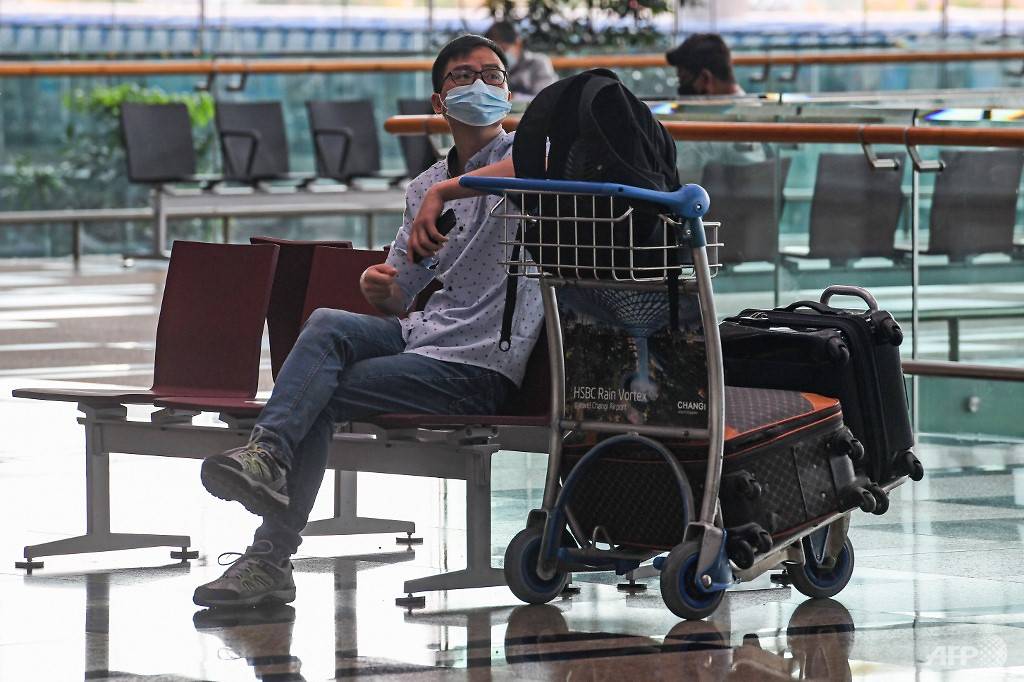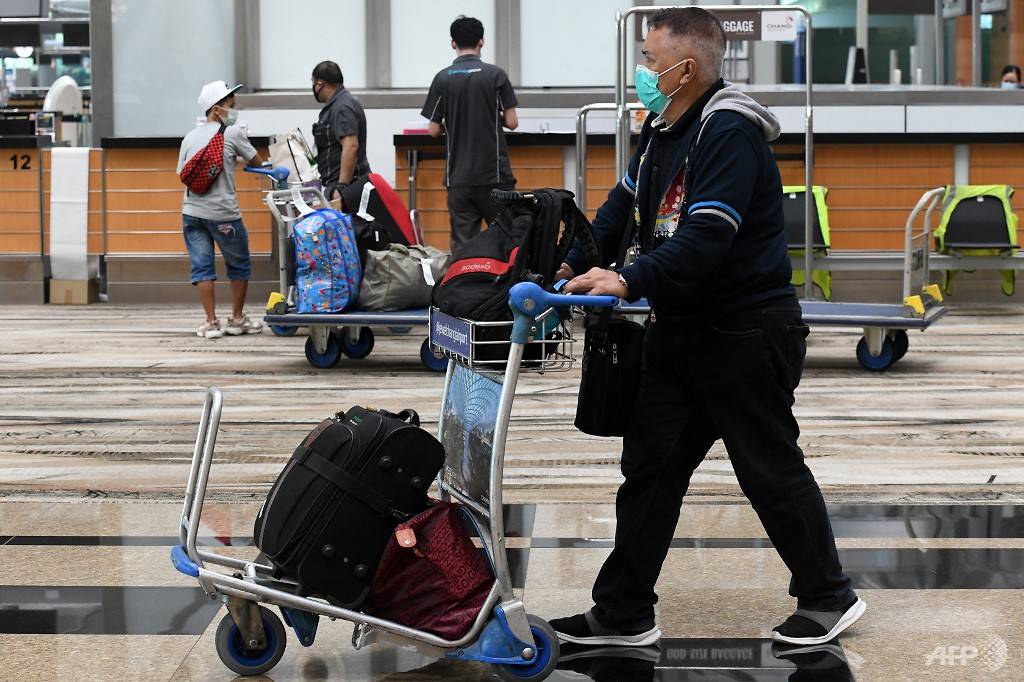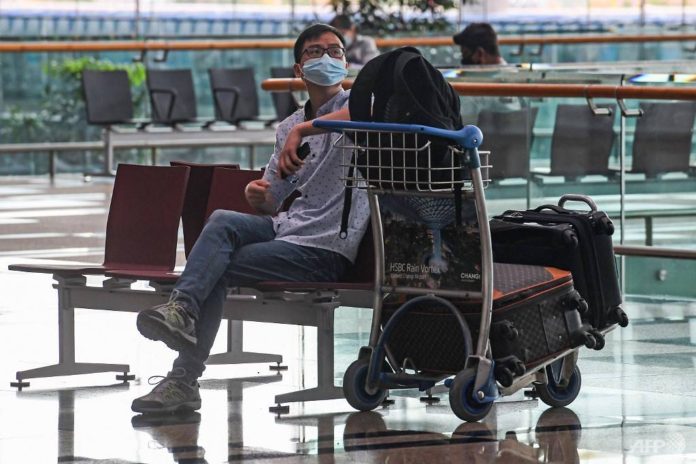SINGAPORE: As part of Singapore’s plans to revive its aviation sector, now that COVID-19 cases have been steadily falling, the Government has been setting up “green lane” arrangements and travel bubbles with certain countries and territories.
Most recently on Monday (Oct 12), Singapore and Indonesia agreed to establish a reciprocal green lane for essential business and official travel.
Here’s a look at how the different travel arrangements vary in terms of restrictions and requirements:
READ: Air travel bubbles, more green lanes part of plans for Singapore to ‘revive’ Changi Air Hub amid COVID-19: Ong Ye Kung
FAST LANE: CHINA
Singapore’s first travel agreement was a “fast lane” arrangement with China which started on Jun 8.
It allows for official or business travel between Singapore and six provinces and municipalities in China – Shanghai, Tianjin, Chongqing, Guangdong, Jiangsu and Zhejiang.
Travellers must be sponsored by a company or government agency.
For Singapore residents, the relevant company or agency will file an application with the authorities in the province or municipality they intend to travel to.
Once approved, they can then apply for a visa from the Chinese Embassy in Singapore, as well as submit a health declaration to the Chinese authorities.
For China residents travelling to Singapore via the fast lane, the company or government agency sponsoring their trip in Singapore will file an application for a SafeTravel Pass, and receive an approval letter once they are given the go-ahead.
Travellers need not be quarantined, but must be tested for COVID-19 before departure from either country. They will be tested again upon arrival, and remain isolated for one to two days while waiting for test results.
They will have to bear the costs of getting tested.
Travellers must also strictly adhere to a controlled itinerary supervised by the host company or government agency. They must not use public transport, travelling instead using private hire cars, taxis or transport arranged by their hosts.
Those travelling to Singapore must use contact tracing app TraceTogether during their stay, while Singapore residents travelling to China will have to use the country’s local Health QR code while they are there.
Those who need to travel between fast lane regions in China within 14 days of arrival must get approval in advance from the local authorities of the next destination, through the agency or company hosting them.
They will only be allowed to travel outside the six fast lane regions after 14 days, and should adhere to prevailing measures in China.
FAST LANE: SOUTH KOREA
Similar requirements apply to official and business travel between Singapore and South Korea. The fast lane between the two countries opened on Sep 4.
They will need to be sponsored by a company or government agency in the country they are travelling to, which will apply for the relevant documents on their behalf – a SafeTravel Pass for those travelling to Singapore, and a certificate exempting them from quarantine or isolation for South Korea.
They will have to adhere to a controlled itinerary for the first 14 days, and must download the relevant contact tracing mobile apps – Self Health Check Mobile App in South Korea, and TraceTogether in Singapore.
GREEN LANE: INDONESIA
Singapore and Indonesia announced the setting up of a reciprocal green lane on Monday, with applications to begin from Oct 26 and travel to start soon after.
This is also for official and business travel.
Travellers will have to abide by COVID-19 prevention measures agreed by both countries, including pre-departure and post-arrival swab tests.
Under the arrangement, the two points of entry are the Batam Centre Ferry Terminal and Jakarta’s Soekarno-Hatta International Airport, while the points of entry into Singapore are Tanah Merah Ferry Terminal and Changi Airport.
Travellers must use the TraceTogether and SafeEntry mobile applications while in Singapore, or the e-HAC and Peduli Lindungi applications while in Indonesia.
More details – including the procedural requirements, health protocols and application process – will be announced “in due course”.
READ: Singapore, Indonesia agree to launch green lane for essential business and official travel
GREEN LANE: BRUNEI, JAPAN, MALAYSIA
Singapore and Brunei announced the setting up of a reciprocal green lane for essential travel on Sep 1.
Travellers can be of any nationality, but must have stayed in either Brunei or Singapore for at least 14 days prior to departure.
They must also take a COVID-19 swab test at least once in the 72 hours before their flight.
The company or government agency receiving the traveller must apply on their behalf for an Entry Travel Pass for those heading from Singapore to Brunei, or a SafeTravel Pass for those travelling from Brunei to Singapore.
Once approved, the company or agency will have to submit the traveller’s negative COVID-19 test result as well as a controlled 14-day itinerary.
Upon arrival in either country, travellers must produce a valid travel pass, negative COVID-19 test results and visa, if required.
They will also have to take a COVID-19 test while in isolation at their declared accommodation, where they must stay until they receive the test results.
Transportation from the airport to the accommodation will have to be provided by the receiving enterprise or government agency, and travellers should adhere to a controlled itinerary.
Travellers will also need to download and use the relevant contact tracing apps on their smartphones – TraceTogether in Singapore, and BruHealth in Brunei.

A passenger waits in the departure hall at Singapore Changi Airport on Jun 8, 2020. (File photo: AFP/Roslan Rahman)
The requirements are similar for reciprocal green lane arrangments with Japan and Malaysia.
Travellers will have to be sponsored by a government agency or company, keep to a controlled itinerary and download the relevant contact tracing apps.
READ: Commentary: Want to travel again? It’s not sitting in a plane you should worry about
PERIODIC COMMUTING ARRANGEMENT: MALAYSIA
Apart from the reciprocal green lane arrangement, some residents between Singapore and Malaysia can travel via the periodic commuting arrangement (PCA) – for longer-term work and business-related travel.
It allows Singapore and Malaysia citizens or permanent residents who hold long-term immigration passes for business and work purposes in the other country to enter that country for work.
Under the PCA, visitors must remain in the destination country for at least 90 days before being allowed to return home.
They are only allowed to travel via the two land border crossings at Woodlands and Tuas checkpoints, with those entering Singapore required to take a COVID-19 swab test and serve a stay-home notice of at least seven days.
They will only be allowed to start work after serving the stay-home notice and testing negative for COVID-19.
Singapore citizens and permanent residents returning to Singapore for home leave after working for at least 90 days in Malaysia under the arrangement can apply for a waiver of their stay-home notice.
Companies must apply for the PCA on their employees’ behalf.
FAQ: How can workers travel between Singapore and Malaysia and what are the COVID-19 protocols in place?
Singapore’s Ministry of Health announced on Monday that in light of an increasing number of COVID-19 cases in Sabah, those with recent travel history to the East Malaysian state would have to serve a 14-day stay-home notice from Oct 14.
This also applies to returning Singapore-based travellers under the reciprocal green lane, as well as Malaysian citizens and permanent residents entering Singapore under the PCA.
However, it does not apply to Malaysia-based travellers under the reciprocal green lane, who will continue to be subject to measures such as COVID-19 tests before departure and upon arrival, as well as adhering to a pre-declared controlled itinerary.
AIR TRAVEL PASS: VIETNAM, BRUNEI, NEW ZEALAND, AUSTRALIA
Singapore unilaterally opened its borders to travellers from Vietnam, Brunei, New Zealand and Australia, excluding Victoria state.
Unlike the fast or green lane arrangements, this includes all forms of short-term travel, including for leisure.
Visitors have to apply for an Air Travel Pass, and must have remained in the departing country for 14 consecutive days prior to arrival in Singapore.
They will not have to serve a stay-home notice but must take a swab test upon arriving in Singapore. After they get a negative test result, they will be able to go about their activities.
Travellers must also use the TraceTogether app during their stay.
“There are countries/regions where the virus is well under control and the risk of importation is low. We have thus lifted our border restrictions and updated our travel advisory to allow general travel between Singapore and such low-risk countries,” said MOH of the four countries.
READ: Allowing some travellers to take COVID-19 tests instead of serving stay-home notices is ‘small, cautious step’ to reopen aviation: Ong Ye Kung
For Australia and New Zealand, however, border restrictions remain in place, with the government advising their residents not to travel abroad.
Those who need to travel must apply for an exemption.

A passenger pushes a trolley in the departure hall at Singapore Changi Airport on Jun 8, 2020. (File photo: AFP/Roslan Rahman)
Most of Singapore’s travel arrangements are to facilitate business and official travel, as a first step towards reviving Changi Air Hub.
Transport Minister Ong Ye Kung cautioned earlier this month that Singapore residents need to “manage expectations” about travelling abroad for holidays.
“For members who are hoping that I’m about to announce some air travel resumption and even possible December holiday destinations, I am sorry I will disappoint you,” Mr Ong told Parliament.
“The key is to make sure we stay safe and manage the risks. We have gone through quite a bit, including a painful circuit breaker, to arrive at the stable situation we have today. And we must not give that up.”
READ: Airlines restructuring and rapid testing before flights – what the new normal for aviation could look like
REDUCED STAY-HOME NOTICE
For Singapore citizens, permanent residents and long-term pass holders returning to Singapore from Hong Kong, the stay-home period will be reduced from 14 days to seven days.
They can serve the stay-home notice period at their place of residence instead of at a dedicated facility.
This takes effect from 11.59pm on Oct 14, as Hong Kong is added to a list of low-risk territories.
Mainland China, Macau, Taiwan and Malaysia (excluding Sabah) are also on the list.
File photo of a Singapore Airlines passenger jet at Changi International Airport, Jun 8, 2020. (Photo: Roslan RAHMAN / AFP)
STRICTER REQUIREMENTS: PRE-DEPARTURE TESTS
To reduce imported cases from Indonesia and the Philippines, those who are not Singaporeans or permanent residents with recent travel history to the two countries will now be required to take a COVID-19 test within 72 hours before departing for Singapore.
This requirement will take effect for people arriving in or transferring through Singapore from 11.59pm on Oct 19, and travellers will need to present a negative COVID-19 test result as a condition of approval to enter or transfer through Singapore.
They will still be required to serve a 14-day stay-home notice at dedicated facilities and produce a negative COVID-19 test before the end of their notice.
Travellers from India who are transferring through Singapore will now also need to present a valid negative COVID-19 test result, said MOH on Monday.
BOOKMARK THIS: Our comprehensive coverage of the coronavirus outbreak and its developments
Download our app or subscribe to our Telegram channel for the latest updates on the coronavirus outbreak: https://cna.asia/telegram





